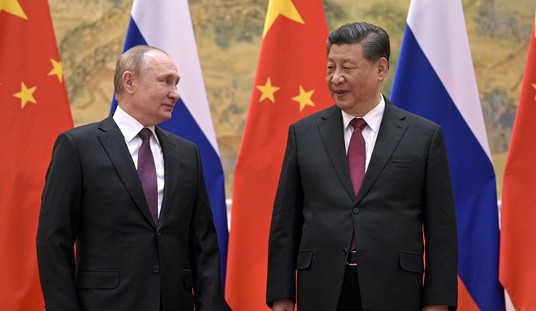Back in November 2010 I reported in this space on the murder of Aaron Shannon Jr., who at age 5 was shot and killed in his South Los Angeles backyard. Such a killing is horrific under any circumstances, but it was all the more so in that it happened on the afternoon of Halloween, and that Aaron was wearing his Spider-Man costume in joyful anticipation of trick-or-treating that evening. Compounding the horror even further was the motive for the crime: retaliation against a street gang to which neither little Aaron nor anyone in his family had any affiliation. Aaron’s death was given some media attention, but to judge from the level of public outcry, his life was held as less valuable and his death as less tragic than that of Oscar Grant, the young black man who in the early hours of New Year’s Day in 2009 was shot and killed in Oakland, Calif., by an officer with the Bay Area Rapid Transit Police Department.
Grant’s death at the hands of the police led to days of rioting in Oakland, scenes that were repeated in July 2010 when the officer was convicted of involuntary manslaughter rather than murder as the mob would have wished. On the day after the officer was sentenced, a vigil was held in front of a South L.A. police station, which I described near the conclusion of that earlier column:
On Nov. 6, [2010] a candlelight vigil was held at the LAPD’s 77th Street police station in memory of Aaron. Less than a hundred people attended, judging from the brief video report shown on the local news. There was no screaming, no hysterics, not even calls for vengeance against the two men accused of killing Aaron. And there most certainly was no mob rushing off to the nearest Foot Locker store to help themselves to the latest models from Nike. And if the two men accused of murdering Aaron somehow manage to beat the case or bargain for a reduced sentence, that too will be greeted not with outrage but rather with sad resignation.
And now the time for sad resignation has come. Though one of the two men accused in Aaron’s murder was found guilty and sentenced to 128 years to life in prison – this after two hung juries – the second was recently sentenced to just 25 years for his role in the crime. I don’t bring this up as a criticism of the prosecutors who handled the case or the detectives who investigated it. By the standards of gang crime in Los Angeles, where witnesses are often reluctant to testify out of fear of the gangs, this was a satisfactory outcome: two men involved, both sent to prison, albeit one of them for less time than would seem appropriate. The sad resignation comes from the realization that the incarceration of Aaron’s two killers won’t matter much to the quality of life in the area of Los Angeles where the little boy lived out his abbreviated life. The Los Angeles Times informs us that the Florence neighborhood, with 83.5 incidents per 10,000 residents, is currently 13th in violent crime on the paper’s list of more than 260 neighborhoods in L.A. County. Ignobly heading that list is Chesterfield Square, a neighborhood whose stately name suggests placid, tree-lined streets. Some of the streets may be tree-lined, but the neighborhood is anything but placid: the violent crime rate there is 139.4.
Crime numbers such as these prompt the question: What’s to be done about it? And this is where we return to sad resignation, for the answer is, not enough. Both the neighborhoods mentioned above are patrolled by officers from the LAPD’s 77th Street Division, one of 21 patrol stations in the city. Year in and year out, 77th Street is among the leaders in violent crime in Los Angeles, as reflected in the fact that six of the ten most violent neighborhoods in the county are within its borders. Seventy-seventh Street Division led the city in murders last year (as it does most years), and though the total of 53 was significantly less than the numbers seen in the late ’80 and early ‘90s, it was a 10 percent increase from the previous year, mirroring a similar rise in murders that occurred in the city as a whole. Overall violent crime in Los Angeles was up 20 percent in 2015, with robberies up by 12 percent and aggravated assaults up by 27 percent.
But despite this rise in crime, arrests in Los Angeles were down by almost 10 percent in 2015. Why? There is an ongoing effort in this country to deny the existence of the “Ferguson effect,” i.e., the increasing reluctance among police officers to subject themselves to the risks attendant to proactive policing (see here and here for but two examples). Darren Wilson, the officer who shot and killed Michael Brown in Ferguson, Mo., in August 2014, was demonstrated to have been fully justified in doing so, which was clear enough within hours of the incident. Despite this, he was driven from his job and vilified in the media. Even now, despite having been thoroughly debunked, there persists the myth that Michael Brown was shot in the back and/or with his hands raised in surrender.
In Los Angeles, two police officers are still awaiting a decision on whether they will be prosecuted in the August 2014 shooting death of Ezell Ford, who, when he tried to wrest an officer’s handgun from its holster, paid for it with his life. Though LAPD Chief Charlie Beck ruled the shooting to be “in policy,” i.e., justified under both the law and department guidelines, the civilian police commission – mayoral appointees without even a trace of expertise in policing – ruled the shooting to be “in policy” as to one officer, but “out of policy” as to the other, subjecting him to discipline or even termination.
And earlier this month, Beck made a grand show of recommending that an officer be prosecuted for shooting and killing an unarmed man near Venice Beach last May. Though such charges may in fact be warranted, the apparent relish with which the chief made his announcement left many in the department’s rank and file disheartened, widening the chasm that already existed between the chief and his officers. On Jan. 20, the leadership of the Los Angeles Police Protective League, the union for rank-and-file officers, held a press conference at which they criticized Beck for failing to take action against the recent rise in crime. Of particular concern to patrol officers is their dwindling numbers. As of last month there were 9,903 sworn officers on the department, yet more and more of them are being assigned to specialized units at the expense of patrol. In some stations around the city it is not uncommon to see only three or four units on the streets at some hours of the day, putting the officers who remain in patrol at risk in the event they need backup quickly.
Given this set of circumstances, it should come as no surprise that crime is rising in Los Angeles, as it is for similar reasons in a number of other cities. In Chicago, an officer is facing murder charges in the October 2014 death of Laquan McDonald, a black 17 year old who was high on PCP and running down a major street with a knife in his hand when an officer shot and killed him. Police dashboard camera video of the shooting was kept from public view for more than a year, but when it was finally released last November, prosecutors made the nakedly political decision to charge the officer in the hope that rioting could be averted. Protesters did disrupt traffic and shopping on Chicago’s Michigan Avenue, but there was no rioting of the sort seen in Ferguson after Michael Brown’s death. Murders were up in Chicago last year, and in the city’s current political climate there’s no reason to expect that trend to reverse in 2016.
And in Baltimore, where six police officers have been charged in the death of Freddie Gray, 2015 was the city’s deadliest year ever, with 344 homicides. Those who would deny the Ferguson effect call these homicide spikes coincidental, but my friend Heather Mac Donald has persuasively rebutted these denials in the Wall Street Journal and City Journal.
How the parents of Aaron Shannon Jr. would have wished for a police car to come along as the two monsters who would soon kill their son prowled that alley in search of a victim. How the loved ones of any of the thousands of Americans murdered last year would have had the same wish. If only the police had been there. But having the police there is only half of the solution to the rise in murders. Cops have to be there, and they have to be willing to get out of their cars and question people acting suspiciously. Police officers have always been willing to risk a shootout in the cause of defending the defenseless, but they are wary of becoming the next cop to star in some political prosecution.
The only thing preventing some neighborhoods in Los Angeles, Chicago, Baltimore and many other cities from being even deadlier than they are is the fear of the police. Where that fear is diminished, violence will only increase. The Ferguson effect is real; you’d better get used to it.










Join the conversation as a VIP Member